An occasional series on gardens I have designed and planted. First up is a garden in Devon, made for my younger sister. In 2001 she moved into her present home, a Georgian house with a small, sloping, south facing stone walled garden at the front. Her brief was ‘jungly, exotic, subtropical’. She loves acers, hostas, bamboos and ferns in particular. She wanted a garden full of foliage interest: different shapes and colours and textures, and the bigger the better. Flowers weren’t the top of the list, but if they were to sneak in there, she wouldn’t mind …
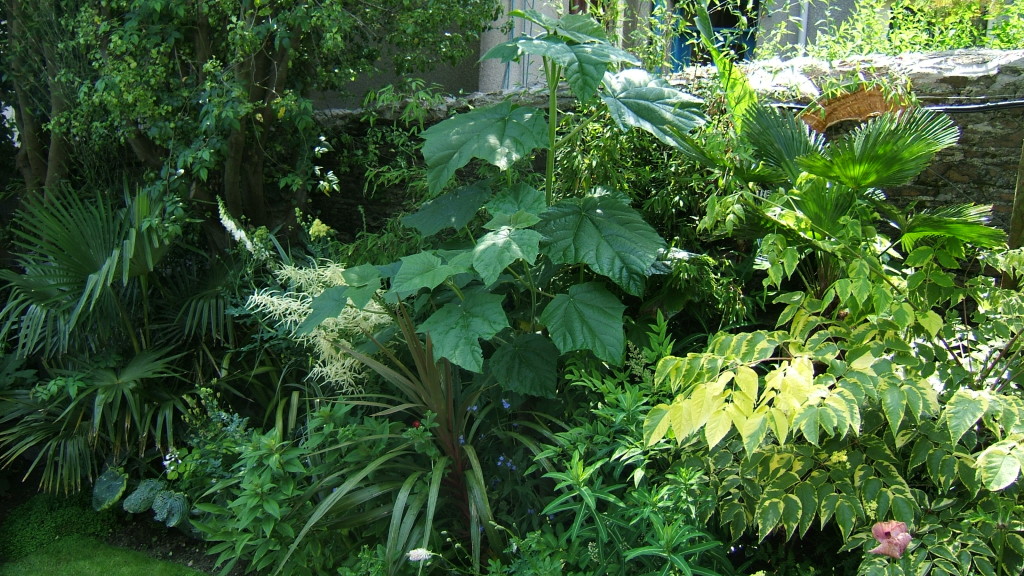
The main emphasis in the garden is on the foliage. The large-leaved plant is a Paulownia tomentosa which is cut right back every year to encourage the large leaves to grow. Other plants seen here include Aralia elata ‘Aureovariegata’, Euphorbia mellifera, Nandina domestica and Aruncus dioicus. There’s a banana lurking in the background too.
The garden had a few mature trees around the edge and a grand old apple tree on one of the terraces: everything else was old or diseased or unwanted, and so they went, leaving a daunting area of naked ground. After the cull, the first thing we had to do was weed, weed and weed, and then weed some more, and then leave the garden fallow for a whole year before we could plant anything. The reason? Ground elder (Aegopodium podagraria). It was everywhere in the garden, its roots reaching sometimes 50 or 60 cm deep, and getting into the stonework of walls and under the paths. The trouble with ground elder is it is highly invasive, smothering out other plants, and it can regenerate from the smallest fragment of root left in the soil. So we dug out as much as we could, and then waited to see what sprouted, and gave it another digging over. We preferred to do the weed control manually and organiicaly, rather than go the quicker chemicals-based route of zapping the lot with weedkiller.
After over a year, in spring 2003, we were able to start planting. The hard landscaping for the garden wasn’t too attractive, but it was too big (and expensive) a project to redo it as well as completely replant the garden, so we made do. We were lucky in that the garden was completely surrounded by a beautiful old stone wall, made from the local Devonian shillet.
My sister decided she wanted an alley of pompom trees (as we inelegantly call them) to flank the central path up to the house. We planted eight magnificent Elaeagnus x ebbingei trees from Architectural Plants in West Sussex. On either side of this I planted matching jewel beds that were inspired by the beautiful show-winning Evolution Garden by Piet Oudolf and Arne Maynard that I’d seen at the Chelsea Flower Show in 2000.
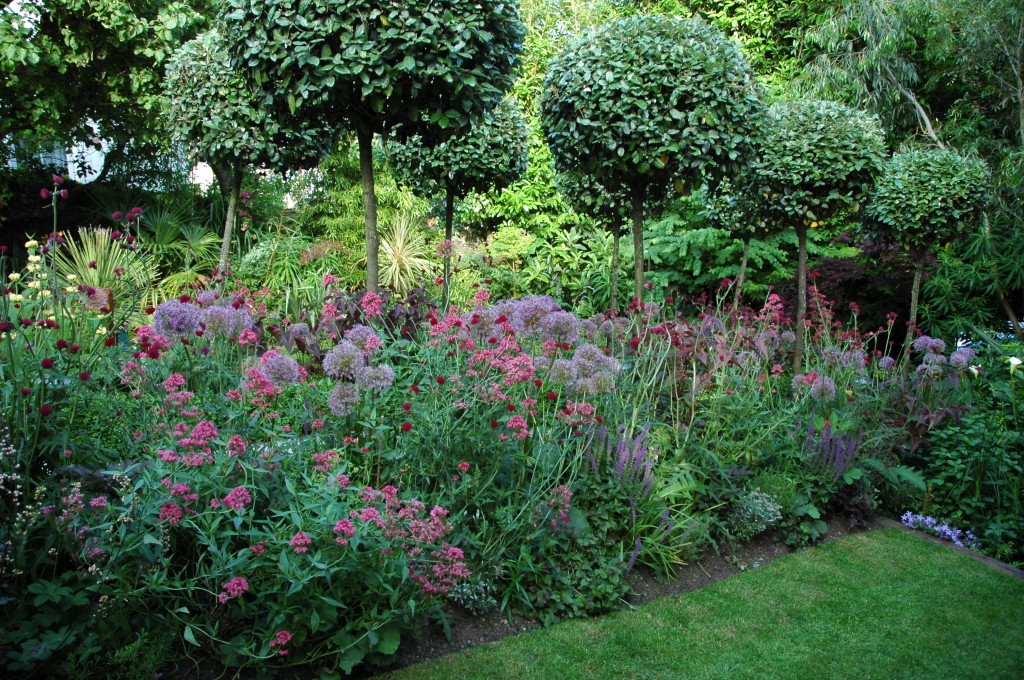
The jewel beds, with Allium ‘Globemaster’, Cirsium rivulare ‘Atropurpureum’, Veronica austriaca subsp. teucrium ‘Knallblau’, Veronica spicata ‘Romiley Purple’, Convolvulus cneorum, Centranthus ruber var. coccineus, Persicaria microcephala ‘Red Dragon’, Alchemilla mollis, and others underneath the eight Elaeagnus x ebbingei trees.
We made a pond, and a tree fern grove underplanted with ferns, and shrubby beds at the bottom end of the garden to provide some privacy from the street.
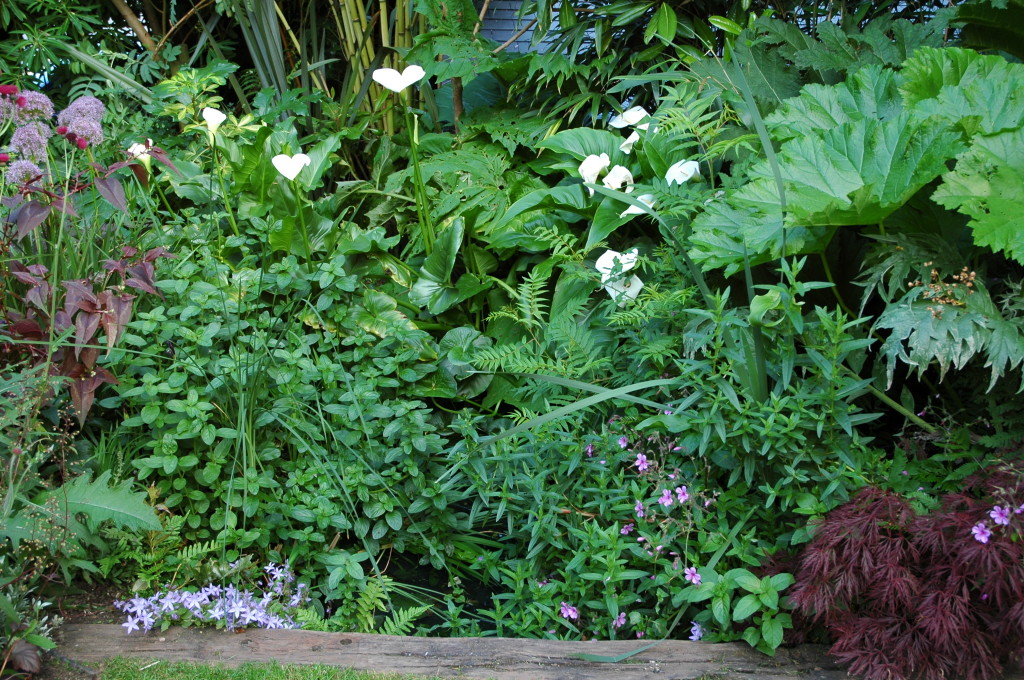
There’s a pond in here somewhere, honest! Plants include the massive Zantedeschia aethiopica ‘Gigantea’, Arundo donax, Darmera peltata, Cynara cardunculus and good old Geranium palmatum that self-seeds with wild abandon.
My sister opened the garden for a weekend in the end of May for three years (2005, 2006 and 2007) for the National Gardens Scheme: all moneys collected go to various charities, and over the three years she raised a truly amazing £3,300 from entrance fees, the sale of cakes and refreshments, and in the second and third years we ran a plant stall as well as so many people were asking for plants that were in the garden. I started potting up all the Echium pininana seedlings I could find, plus Geranium palmatum ones and splitting off bits of the Cirsium rivulare ‘Atropurpureum’ and potting on as well. They all went like hot cakes!
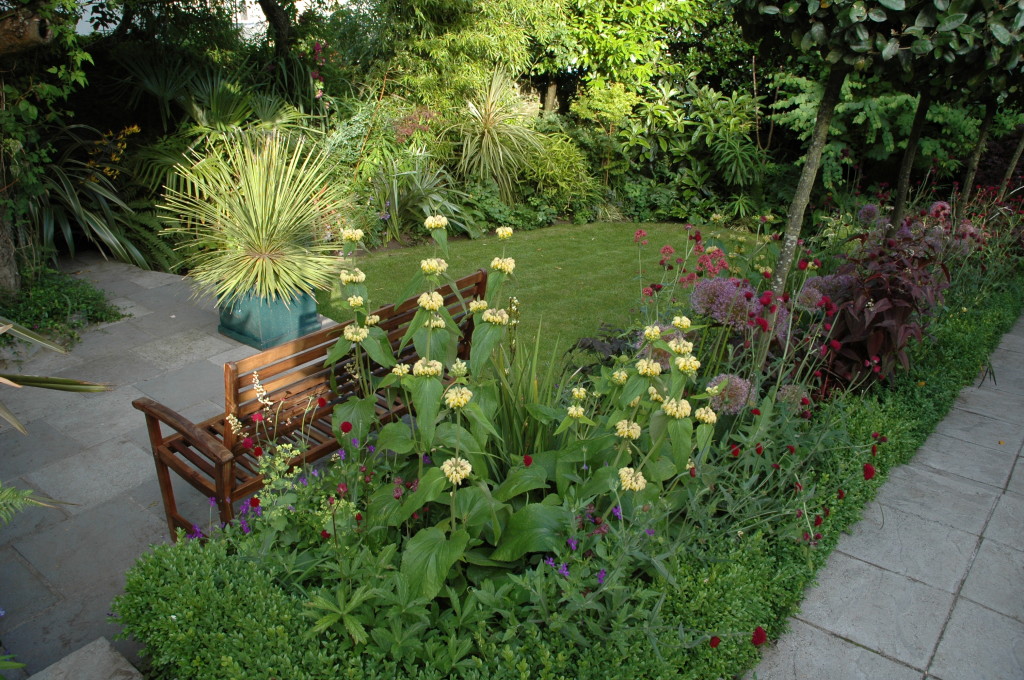
The central jewel beds edged in box (Buxus sempervirens). The yellow plant is the lovely but thuggish Phlomis russeliana. The amazing plant in the pot on the terrace is Dasylirion acrotrichum.
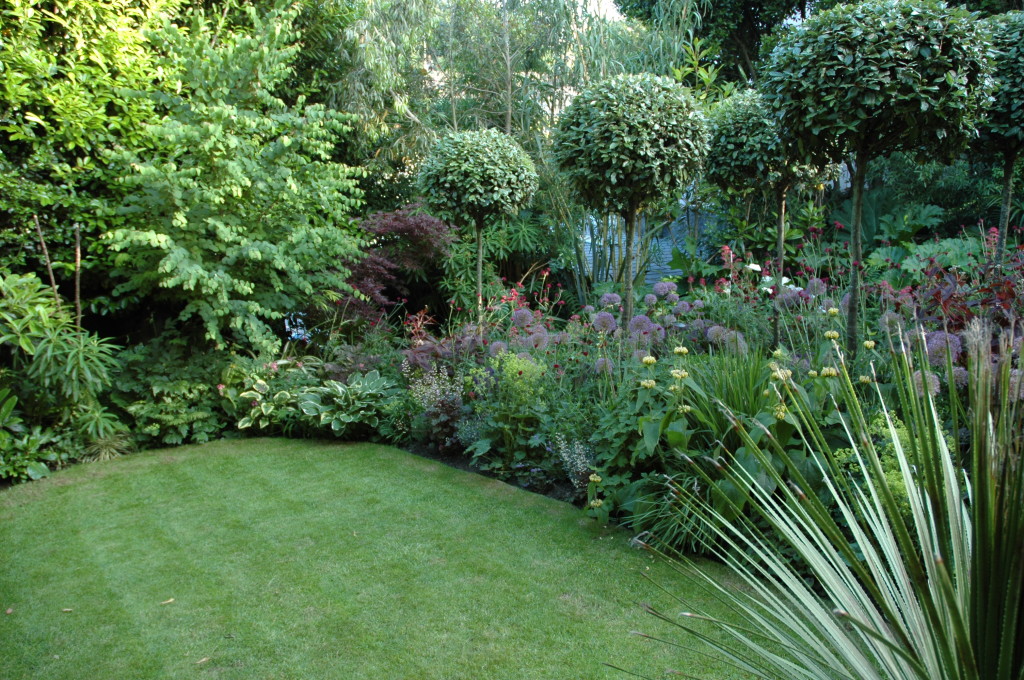
The left hand lawn surrounded by shrubs and trees including Cercidiphyllum japonicum (Katsura, a tree that smells of candy floss in the autumn when the leaves are colouring up), Euphorbia mellifera, with flowers that smell of honey, and Melianthus major, with leaves that smell like peanut butter when bruised and flowers that smell like honey! The Allium ‘Globemaster’ heads are just going over in this photo.
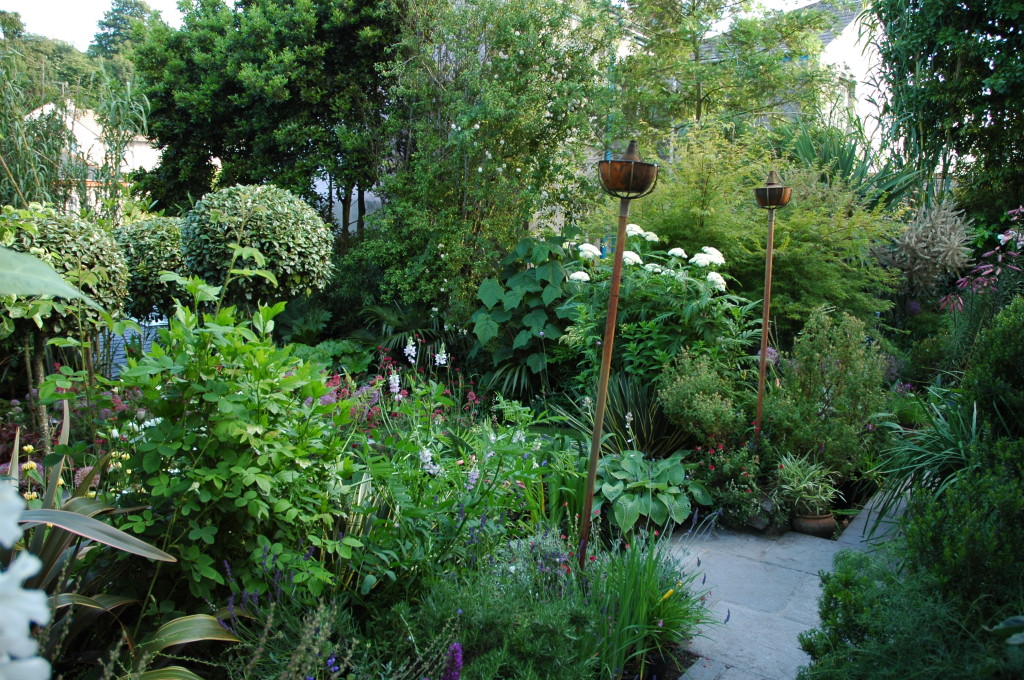
View from one of the top terraces looking across the garden.
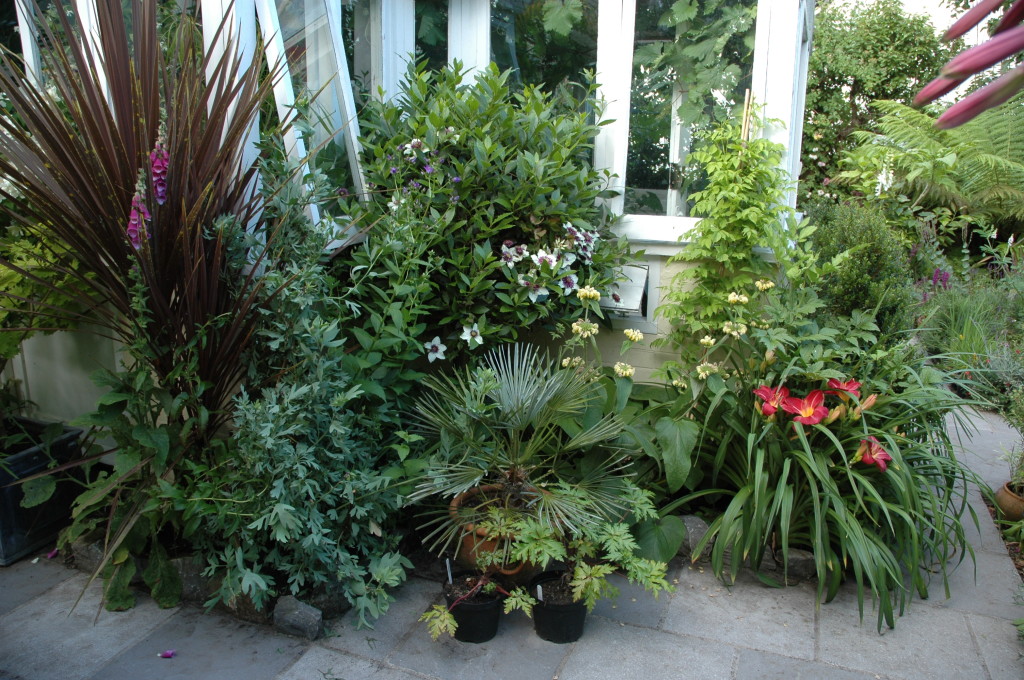
Lots of pots everywhere, including beautiful fragrant Lilium regale looming in on the right.
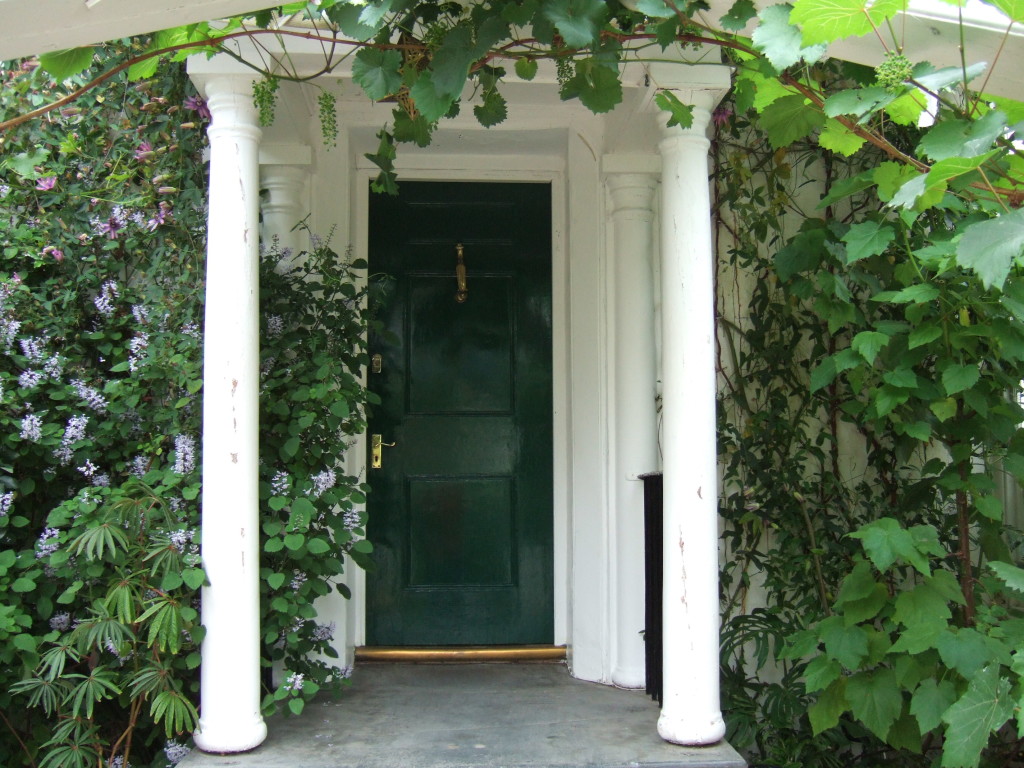
The conservatory. This is an Edwardian addition to the front of the house, and is a beautiful, restful space. The pale blue flowered plant is Plectranthus zuluensis, with a pinky purple-flowered passion flower growing above it, and of course there’s a grape vine.